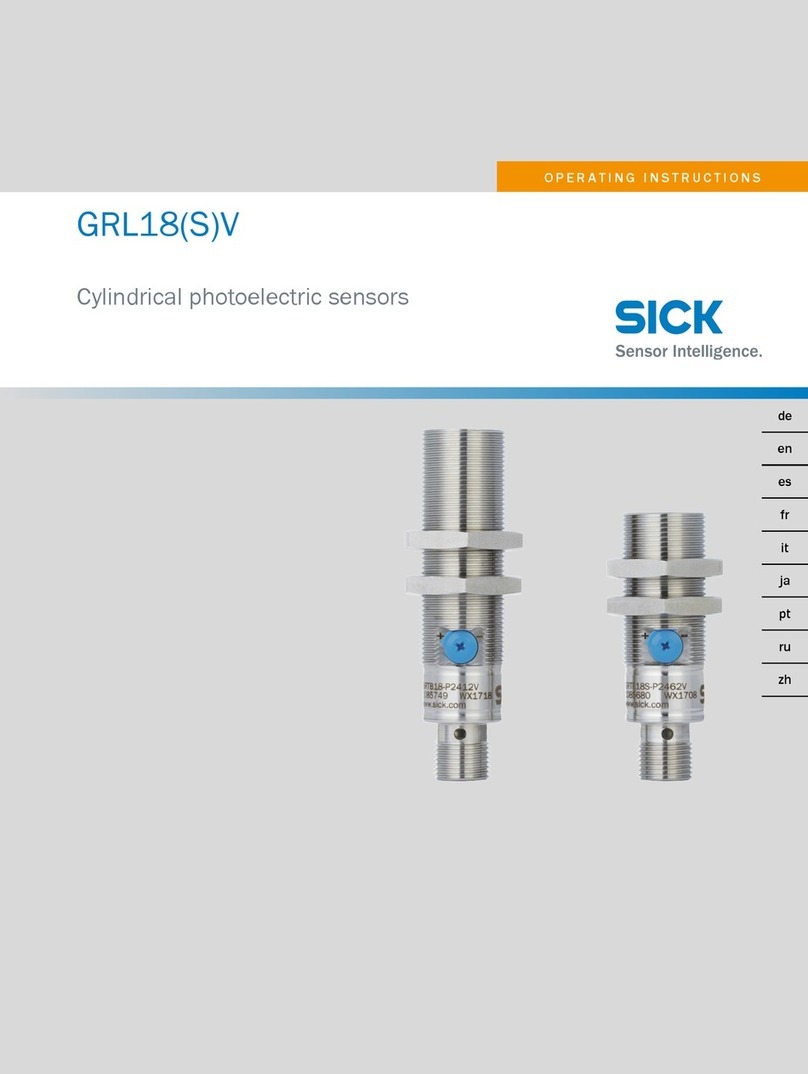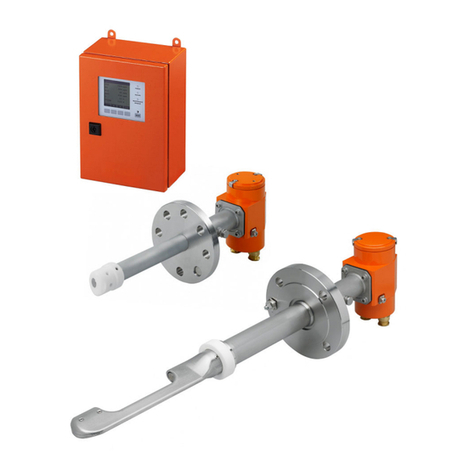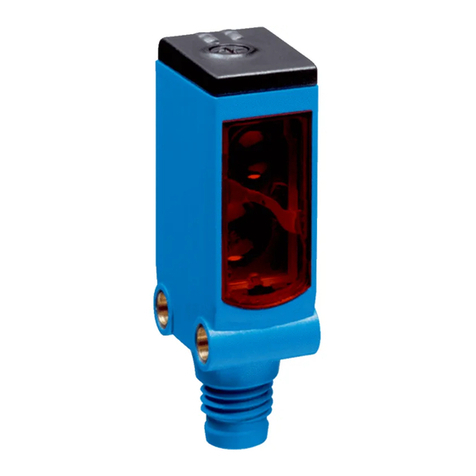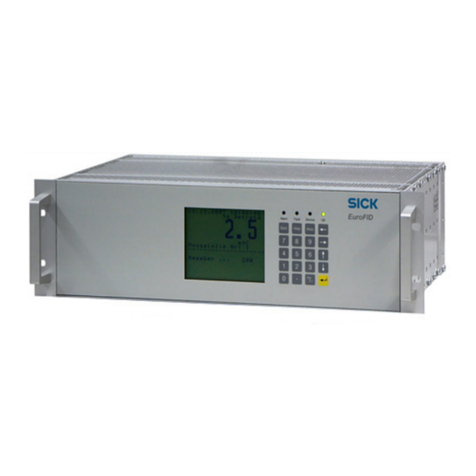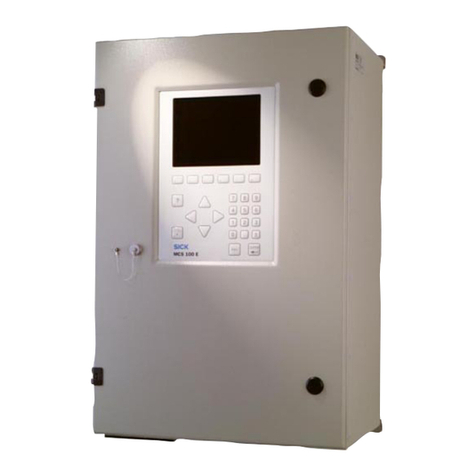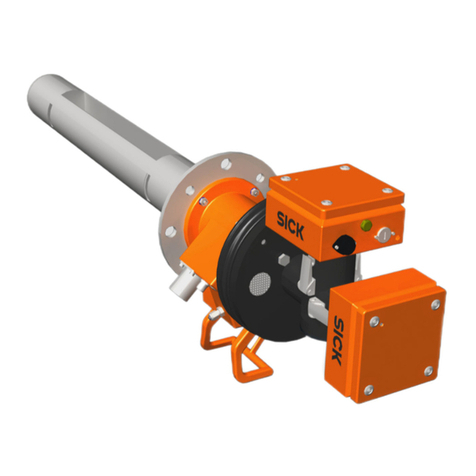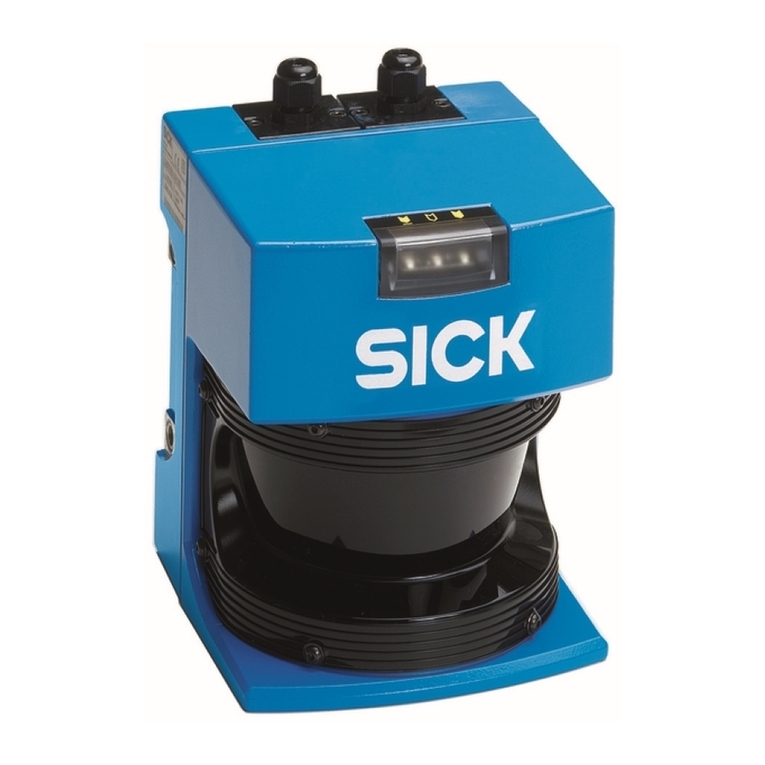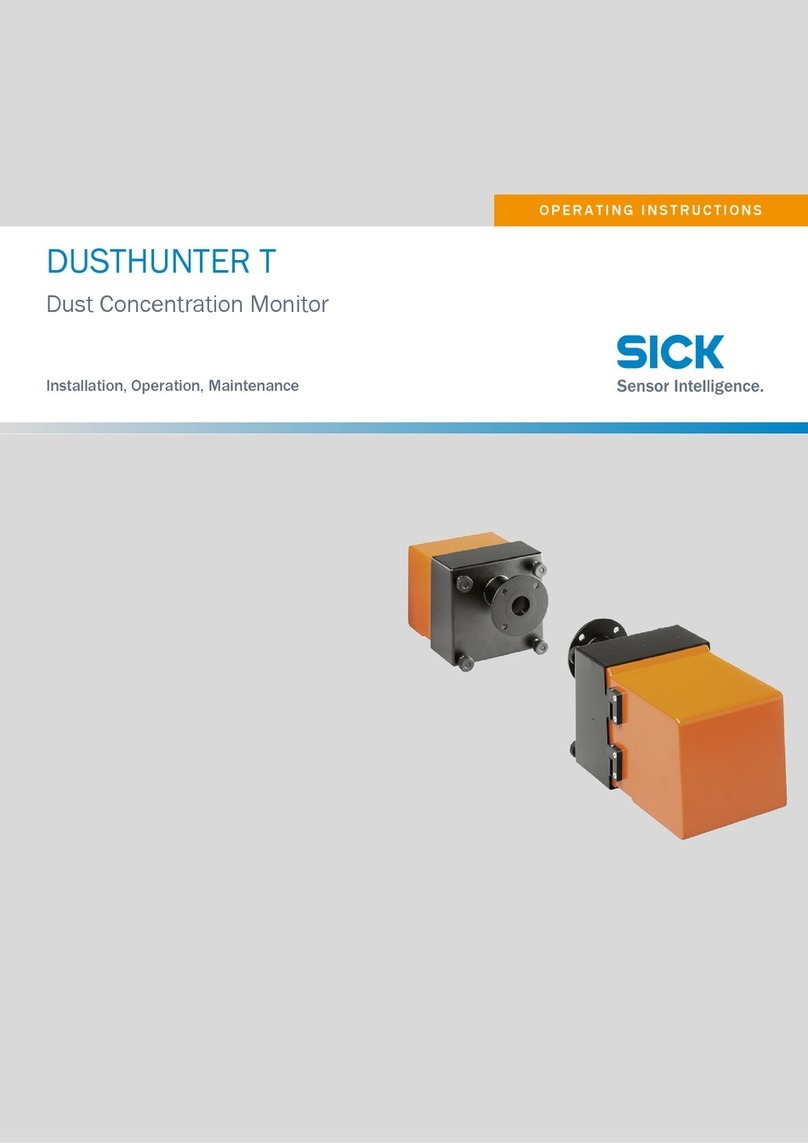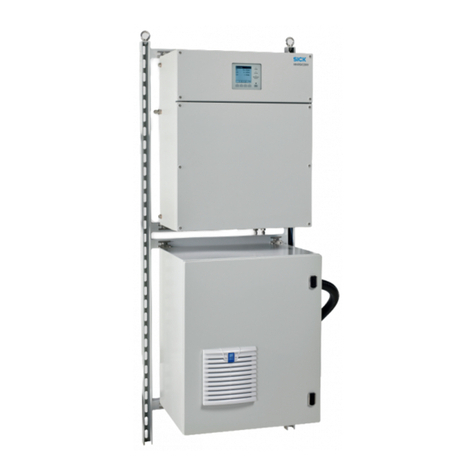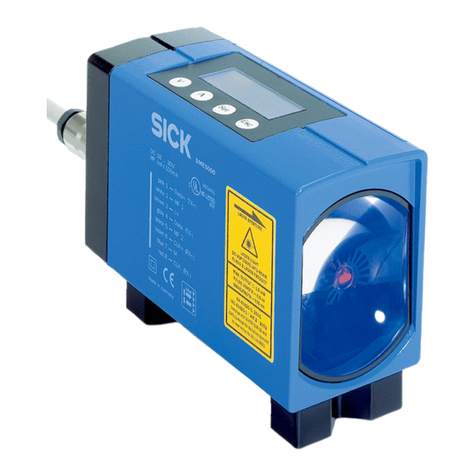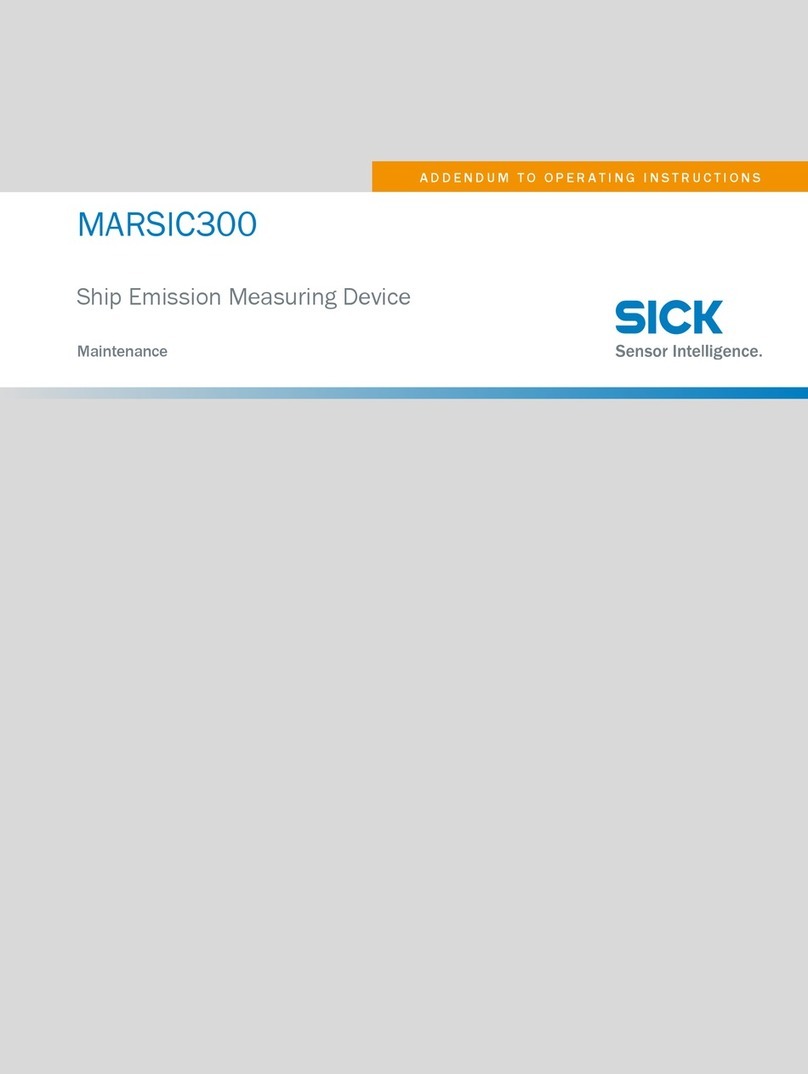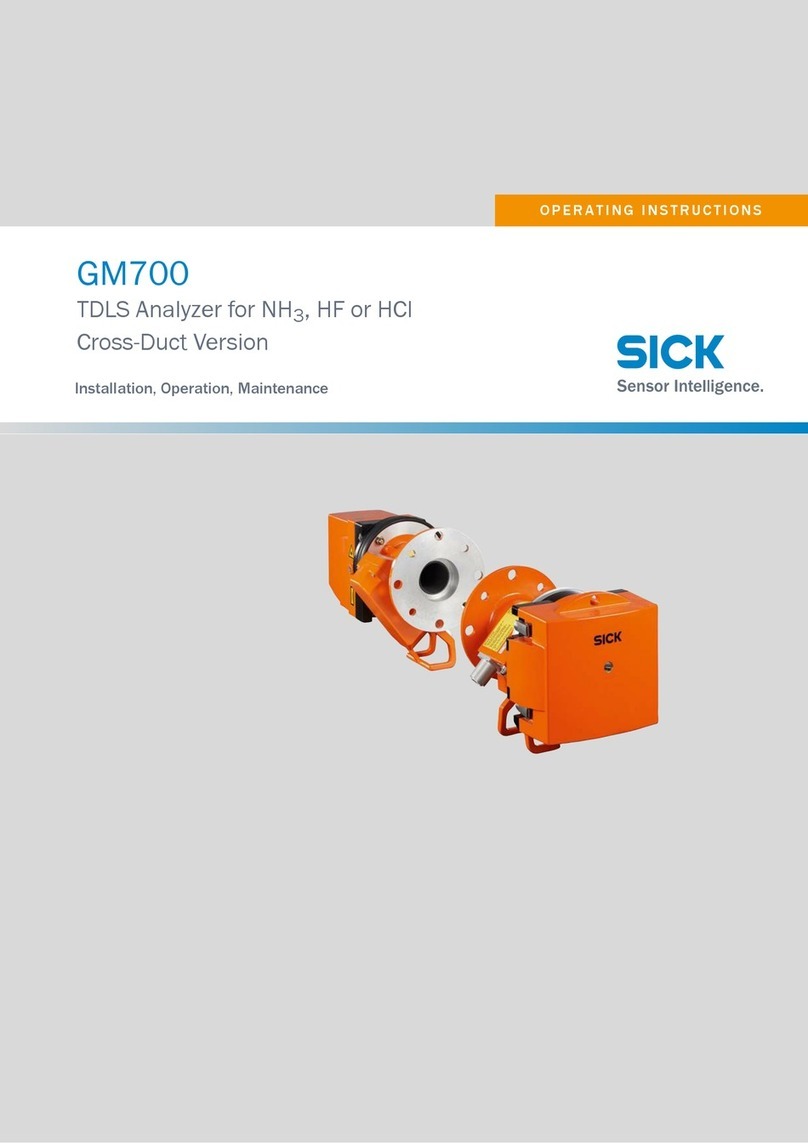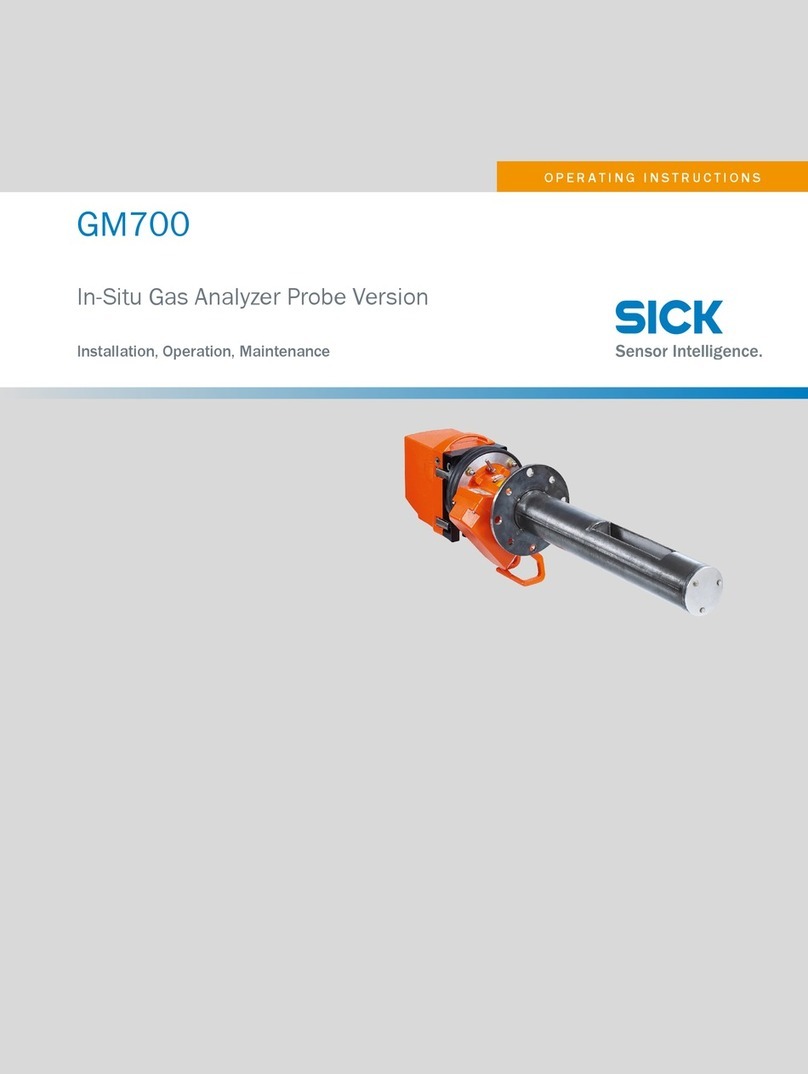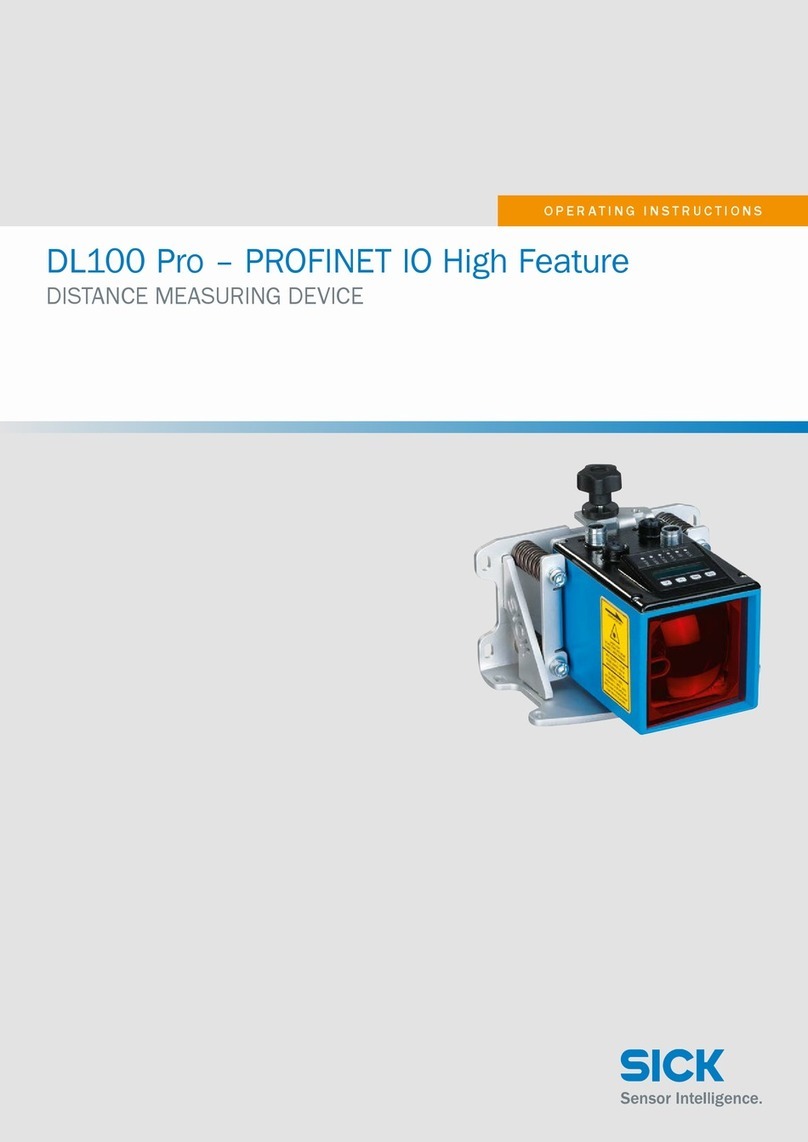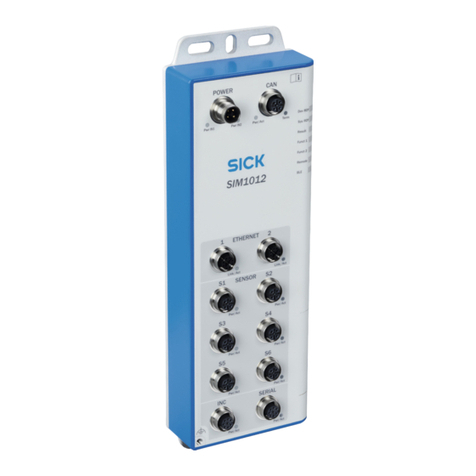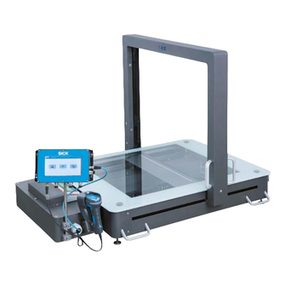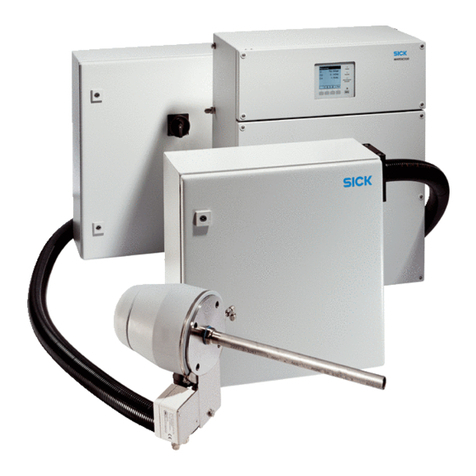
AOD1 display Schematic image Description
9.999 background
changes to white
There is no object in the measuring range.
9.999 background
remains black
The object is larger than the measuring range.
-xxx The object protrudes
into the measuring
range from above.
Measure
polarity Set in a
positive direction
+xxx Measure
polarity Set in a
negative direction
+xxx The object protrudes
from below into the
measuring range.
Measure
polarity Set in a
positive direction
-xxx Measure
polarity Set in a
negative direction
6 OL1 menu
1. Keep pressing until an arrow appears in front of Head 1 or 2
(depending on where the OL1 is connected).
2. Press
to get to the Top menu.
Top menu
Num‐
ber
Function Parameter Comment
1Top Menu Teach mode –
Setup mode –
Back Return to basic
screen
6.1 OL1 “Setup mode” configuration menu
1. Starting from the Top Menu , press to get to the configuration menu.
Adjustment options
Num‐
ber
Function Parameter Comment
1Sensitivity Mini Sense –
2nd Sense –
3rd Sense –
4th Sense –
Max Sense –
Adjusted Is set via
Translucent
Teach see OL1
“Teach mode” teach-
in menu, page 2
2Measure polarity Positive see “Measure polar‐
ity” direction func‐
tion, page 2
Negative
3Moving averaging 1 to 128 –
4Zeroing value -5.000 Up to 9.999
(0.000)
–
5Measure Type Edge –
Width –
6Measure direction Top Object comes into
light band from above
Bottom Object comes into
light band from below
7Direction Checking OFF see Alignment of
sender - receiver
(“direction check‐
ing”), page 1
ON
8Reset Settings Not Reset –
Execute by
–
“Measure polarity” direction function
Direction function only works with edge measurement (Edge).
1OL1 sender
2OL1 receiver
3Upper
4Lower
How the measured values are displayed from the top or bottom (cable side) is set
here.
Positive: Top -5.000 mm, bottom +5.000 mm
Negative: Top +5.000 mm, bottom -5.000 mm
6.2 OL1 “Teach mode” teach-in menu
Teach-in option
Number Function Comment
1Zeroing –
2Reset Zeroing –
3Translucent Teach Adapts the sensitivity value.
Translucent Teach is recommended
for semi-transparent materials to improve the
detection results
It is only possible to use the Translu-
cent Teach if the sensitivity is set to
Adjusted in the Setup modesee OL1
“Setup mode” configuration menu, page 2.
The Transluent Teach is run without
an object in the measuring range.
7 Application examples
1. Keep pressing until an arrow appears in front of Head 1 or 2
(depending on where the OL1 is assembled).
2. Press
to get to the Top Menu.
3. Press to select Setup mode.
4. Press until Measure Type is displayed.
5. Press or to select Edge or Width.
6. Press
to confirm.
7. Hold
to return to the basic screen.
8. Press
to leave the AOD1, Head 1, Head 2 selection mode in the
basic screen.
“Edge” detection application
•Measure the edge position relating to the measuring range center of the light
band with leading edge detection see AOD1 display and OL1, page 1.
•When more than one edge is in the measuring range, the device cannot
measure and show the value 9.999 (background remains black).
“Edge” detection application for transparent objects
NOTE
Safe edge detection is not guaranteed for very transparent objects (in the
range from about 80% transmission).
•The function works the same as for edge detection of non-transparent
objects.
•The “Adjusted” value must be set in the “Sensitivity” setting for edge detec‐
tion of transparent objects. For optimal sensitivity adjustment, there must be
no measuring object between the sender and the receiver see OL1 “Setup
mode” configuration menu, page 2.
•The direction from which the object protrudes into the measuring range must
be specified in the "Measure polarity" menu item see “Measure polarity”
direction function, page 2.
“Width” and diameter measurement application
•Measures the distance between two edges.
•In this measurement type, the device shows the measured value of
0.000 mm to 9.999 mm.
•The device distinguishes between light-dark and dark-light edges. Then the
width function can measure both the width and the gap.
•In “Width” mode, there must always be exactly two edges inside the measur‐
ing range. If there are more than two edges inside the measuring range, the
output measured values are not specified.
8022330/0000/2018-05-09/en OL1 | SICK 2

